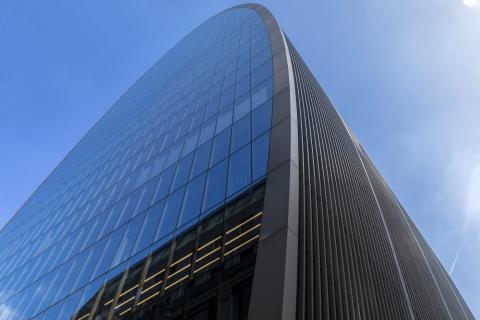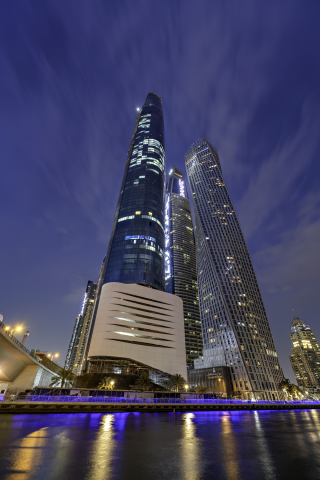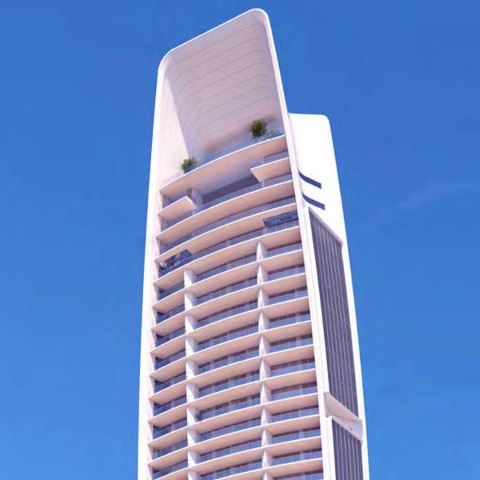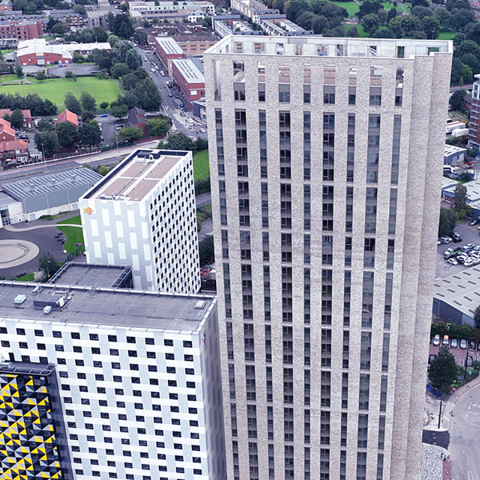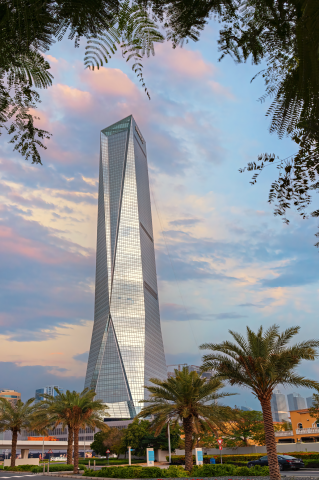Rainscreen & cladding
Vida Dubai Mall
Luxury residential and hotel units set in two contemporary high-rise towers
Situated in the iconic district of Downtown Dubai, the Vida Dubai Mall development offers a mixture of luxury residential and hotel opportunities set within two strikingly contemporary high-rise towers.
Details
Year
2022
Location
Dubai, UAE
Building use
Residential, hotel
Developer
Emaar
Architect
Aedas, WSP Middle East Architectural & Engineering
Main contractor
Shapoorji Pallonji Mideast LLC
Façade contractor
Zebian Facade Solutions, Inventure Metal Products
Products and systems
- CW-FS Firestop
- CW-FB Fireboard
- RV Vertical Cavity Barrier
- CH-CB Closed State Horizontal Cavity Barrier
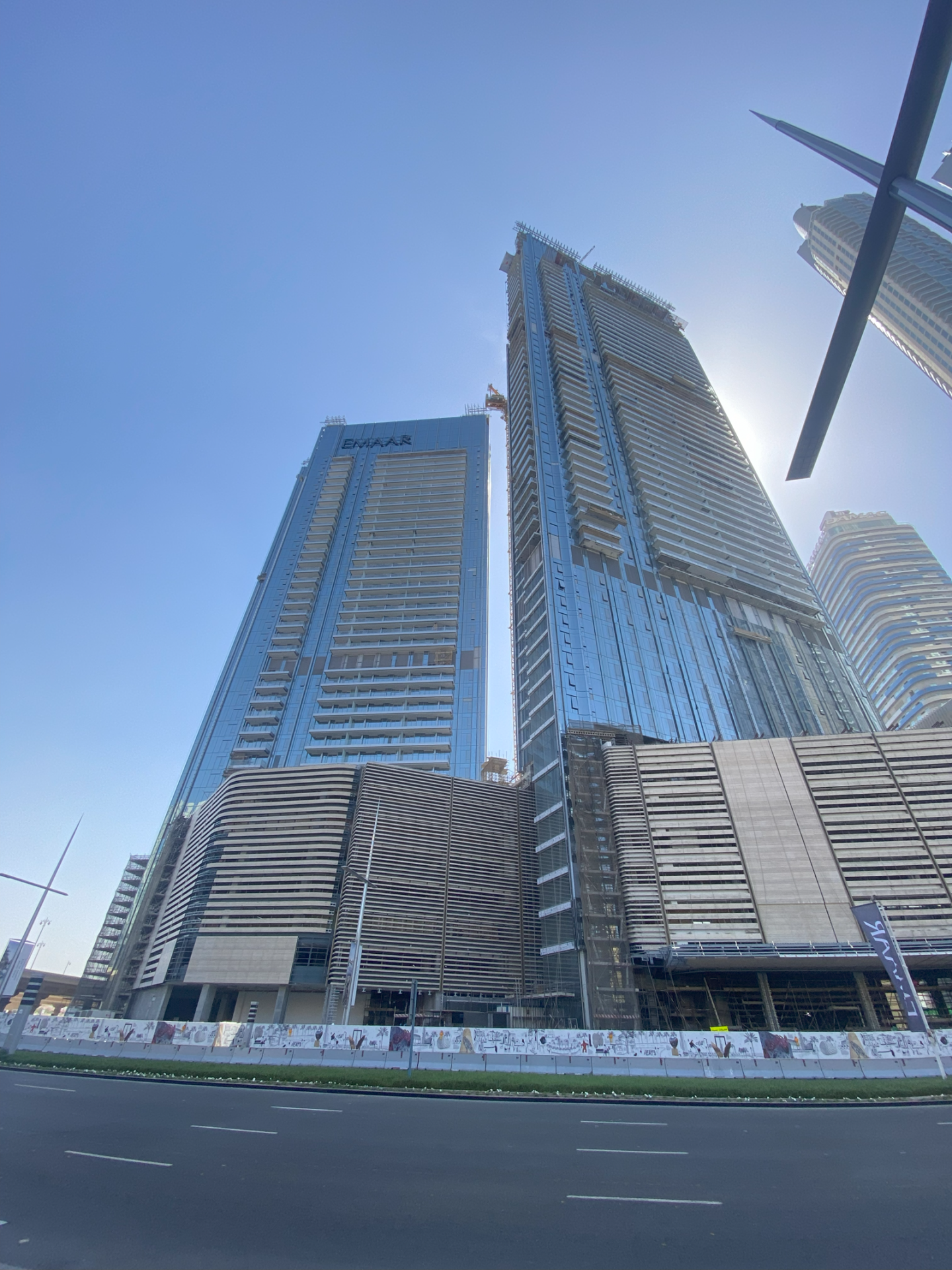
Introduction
Standing tall at 55 and 38 storeys, the project makes the most of its prime location with a gleaming curtain wall façade system that allows for floor-to-ceiling views of the surrounding city, including Burj Khalifa and the Dubai Fountain. To protect the buildings and its inhabitants whilst ensuring code compliance, a fully tested and certified perimeter fire barrier system solution was vital.
Design and specification
In line with the stringent requirements of the UAE Fire and Life Safety Code, the unitised curtain wall required a protected spandrel solution comprising a firestopping system installed continuously between the floor slab edge and spandrel panel at each floor, which included protection to the exposed vertical aluminium mullions in the spandrel zone. This solution needed to have proven its fire resistance performance in achieving a challenging 2-hour minimum (EI 120 or FT 120) fire rating.
The design and specification set out to find solutions from experienced manufacturers— a requirement that was also part of the of the September 2017 draft of the UAE Fire and Life Safety Code that had not long been released.
Whilst exploring several wet-apply two-part systems, which contained components from different manufacturers, it was found that these solutions could not comply with all elements of the Code requirements, nor could they provide a complete and holistically tested protected spandrel solution. To resolve these issues, aluminium façade contractor, Zebian, suggested an enhanced perimeter fire containment solution from Siderise.
The specified system featured CW-FS 120 Curtain Wall Firestops for floor-to-floor horizontal compartmentation and single layer of CW-FB Curtain Wall Fireboard countersunk to the reverse of the insulated spandrel panel along with additional strips applied over exposed mullions.
Additionally, closed state CH-CB Horizontal Cavity Barriers and RV Rainscreen Vertical Cavity Barriers were selected for the non-ventilated rainscreen façade system used on the rear of the building to ensure this element was appropriately passive fire protected. CW-FS was also used for room-to-room vertical compartmentation, sealing the junctions between the apartment units and for separation between public and non-public spaces to ensure compartmentation was in line with code requirements, whilst also helping to reduce noise transmission.
Installation and inspection
With installation quality critical to the performance of passive fire safety products, it was vital that the solution was fitted by competent installers who understood the specific requirements of both the project and the products— so much so that this was part of the stipulations of the architect’s specification.
To ensure this was achieved, Siderise provided clear detailing and onsite training to its experienced installation partners, General International Group (GIG), on the installation of the full spandrel protection system. This was further supported by onsite inspections by technical service engineers, who produced detailed reports with visual evidence that performance-critical aspects of the installation had been carried out to a high standard and per Siderise recommendations. This included checking the products were installed in the correct direction (vertical fibre orientation), the right level of compression had been achieved, and any joints were tightly abutted and taped.
Conclusion
This development is not only an exciting addition to a skyline defined by its modern skyscrapers and futuristic design, but a prime example of the high technical and safety standards necessary to create beautiful buildings that are constructed to protect those who use them.
The perimeter fire containment system specified for the project helped to achieve the passive fire protection requirements for the façades, whilst free technical and site service support helped to ensure every element was delivered efficiently and in compliance with both the Code and the project aims.

Contact us
Our global teams are ready to provide the support you need
